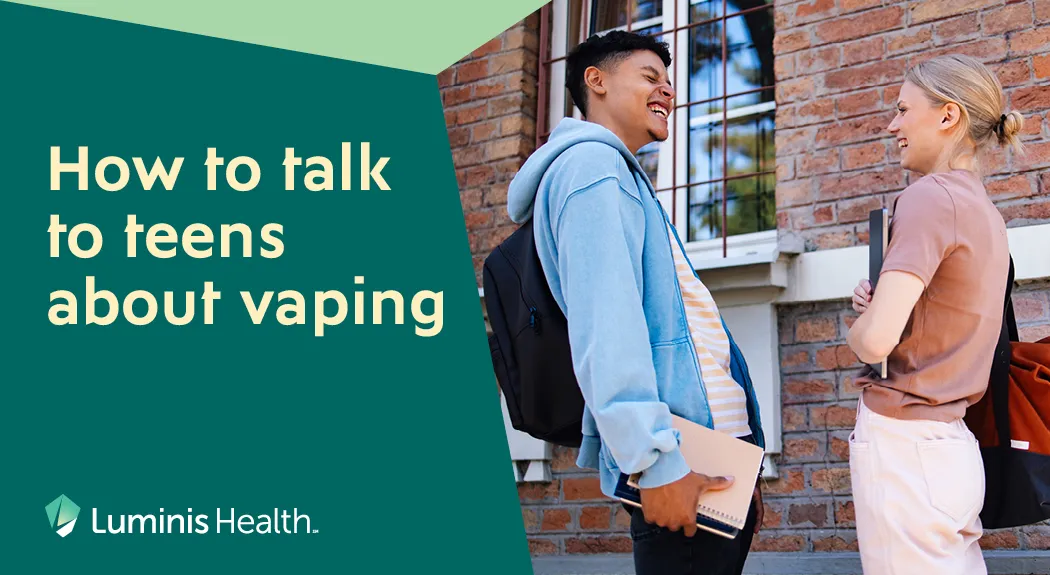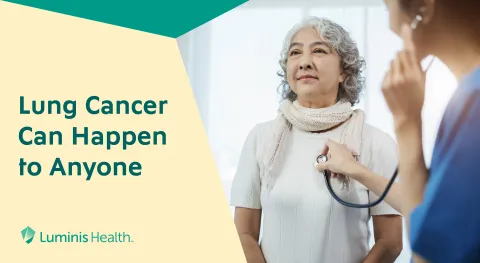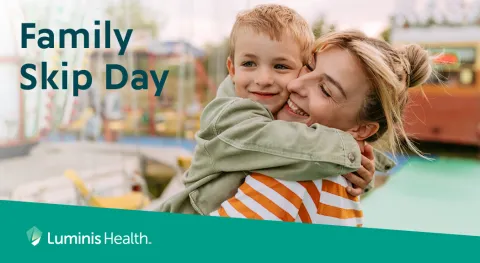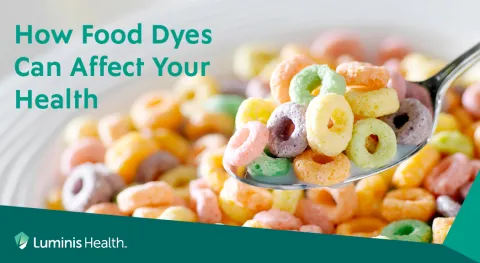
The back-to-school seasons brings excitement—from new teachers to new backpacks. But amid the preparation, it’s also a key moment to have honest conversations with your teen about the risks of vaping and using marijuana.
First, a reality check: In Maryland, 14% of high school students reported using marijuana in the past 30 days, according to the latest health data. While teen experimentation can be common, it doesn’t make it safe. That’s why it’s important to talk to your kids early and often. Sharing facts, not fear, can help them make informed, healthy choices.
Marijuana’s impact on teenagers
Marijuana is legal in Maryland, so it’s safe, right? Not for teens. Their brains are still developing and regular marijuana use can interfere with that growth in serious ways. Potential effects on children and adolescents include:
- Difficultly solving problems
- Impaired memory
- Poor physical coordination
- Slower reaction time
- Trouble focusing
- Increased irritability
- Increased risk of psychosis
- Interference with prescribed medication
Still not convinced? Research shows that teens who start using pot before the age of 18 are seven times more likely to develop marijuana use disorder later in life—a condition where a person struggles to stop using marijuana, even when it negatively affects their health, school, or relationships.
Vaping is more smoke and mirrors
Vaping has become increasingly popular among young people. It’s often cheaper than cigarettes, comes in appealing flavors, and is heavily promoted on social media—which can make it especially attractive to teens. Many people assume that vaping is a safer alternative to smoking tobacco. But the reality is more complicated:
- Nicotine is still addictive. Most vapes contain nicotine—a highly addictive substance that can harm brain development in teens and increase the risk of future substance use.
- Harmful chemicals are still present. Vaping aerosols contain toxic substances like formaldehyde, acetaldehyde, and acrolein—chemicals linked to lung damage and cancer risk.
- Lung injury is real. Vaping has been linked to serious lung illnesses, including EVALI (e-cigarette or vaping-associated lung injury), which has led to hospitalizations and even deaths.
- Unknown long-term effects. Because vaping is relatively new, the full long-term health impacts are still unknown, but early research shows cause for concern.
Tips for talking to teens about vaping and marijuana
Having these conversations with your teen can feel uncomfortable at first. Here are some tips to get you started:
- Start early, talk often. Short, regular check-ins feel less like a lecture and more like a conversation.
- Lead with curiosity, not accusations. Ask open-ended questions: “What have you heard about vaping?” “How do kids get e-cigarettes?”
- Use facts, not fear. Share concrete data (e.g., nicotine addiction, lung injury, impaired brain development) instead of scare tactics.
- Connect to their goals. Explain how vaping or cannabis can hurt sports performance, concentration for classes, or driving safety.
- Model healthy coping skills. Discuss stressbusters such as exercise, music and journaling so nicotine or THC isn’t the default escape.
- Practice exit lines. Roleplay ways to say “no thanks” when offered a vape or joint (e.g., “I’ve got practice tomorrow,” “I’m good—don’t want the hassle”).
- Keep communication twoway. Listen without interrupting; validate feelings even if you disagree. Teens are more receptive when they feel heard.
- Set clear expectations and consequences. Explain family rules (e.g., no vaping, alcohol, or marijuana before 21) and what happens if they’re broken.
- Stay alert to peer influence and online marketing. Ask about social media trends or friends who vape; discuss how ads target teens.
- Revisit the topic. Trends, products, and pressures change quickly; schedule regular “checkins” rather than oneanddone talks.
How Luminis Health can help
Parenting can be tough, but you’re not alone. Luminis Health mental health providers, with expertise in adolescent care, have already laid the ground work.
Through funding from the Maryland Community Health Resources Commission, behavioral health education and support services have been successfully delivered in six high schools in Prince George’s County. The program—developed in close partnership with local schools—has demonstrated meaningful impact in supporting student well-being.
Due to its success, the state has renewed funding for the upcoming school year following a highly competitive grant process. This continued investment underscores the importance of school-based behavioral health initiatives and the strength of collaborative community partnerships.
If you or your children need additional support, the Behavioral Health Urgent Care walk-in clinic at Luminis Health Doctors Community Medical Center in Lanham offers treatment for non-life- threatening mental health needs for ages four and up. No appointment is necessary. Thanks to the state grant, we will expand our hours later this fall to include weeknights and Saturdays.
 Dr. Jesselina Curry is the system medical director for ambulatory behavioral health services at Luminis Health.
Dr. Jesselina Curry is the system medical director for ambulatory behavioral health services at Luminis Health.
Supported by the Maryland Community Health Resources Commission and Maryland Consortium on Coordinated Community Supports, the views presented here are those of the grantee organization and not necessarily those of the Commission or Consortium.



